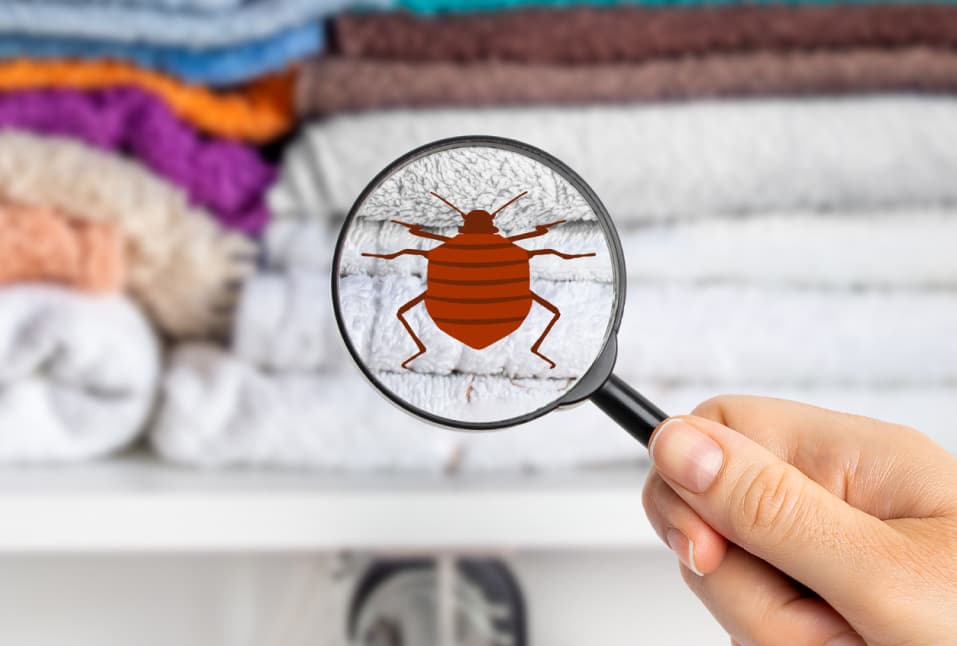Check Out the Different Kinds Of Bug and Their Therapy Options for Effective Monitoring
The monitoring of insects in both agricultural and household settings necessitates a thorough understanding of the different types that can get into these settings, in addition to the treatment options readily available for efficient control. From family rodents that pose health and wellness threats to garden pests that endanger crop returns, each classification requires a tailored technique. Recognizing the nuances of bug actions and the equivalent treatments is vital; nonetheless, the concern remains: what are the most efficient approaches that not only resolve existing problems yet additionally stop future occurrences?

Typical House Pests
Although household bugs can vary dramatically in type and actions, numerous share usual features that make them a nuisance. Usual home insects include rodents such as computer mice and rats, pests like roaches and ants, and occasional invaders such as spiders and flies. These insects usually grow in environments that give easy accessibility to food, water, and sanctuary, making homes especially susceptible.
Rodents, for circumstances, are notorious for causing architectural damages and spreading condition. Pests like cockroaches are not only troubling but can additionally set off allergic reactions and asthma in sensitive individuals.
Efficient bug management begins with prevention, which consists of securing access points, maintaining sanitation, and using proper storage techniques for food. Understanding the habits and qualities of these typical home bugs is important for reliable monitoring and keeping a healthy and balanced living environment.
Garden Insects and Their Effect
Yard insects pose a substantial danger to the wellness and efficiency of plants, with some quotes recommending that they can cause as much as 40% of plant losses in specific areas. These parasites, which consist of insects such as caterpillars, beetles, and aphids, in addition to nematodes, can cause severe damages by preying on plant tissues, causing stunted development, decreased yields, and jeopardized top quality.
The effect of yard pests extends past simple aesthetic problems; they can interfere with communities by changing food chains, affecting pollinators, and spreading diseases among plants. For example, insects like the spider mite can deteriorate plants, making them much more vulnerable to fungal infections. In addition, invasive species might outcompete native plants, leading to biodiversity loss.
Efficient monitoring approaches are necessary to reduce these hazards. Integrated Parasite Administration (IPM) practices, which incorporate biological control, cultural techniques, and targeted chemical applications, can give lasting solutions. Normal tracking and very early intervention are critical in avoiding problems. bed bug heat treatment. By recognizing the details bugs and their habits, garden enthusiasts can execute targeted therapies that not just secure their plants but additionally promote a much healthier garden ecological community.
Rats: Recognition and Threats
Rats are common garden pests that can pose substantial threats to plant health and wellness and overall ecosystem stability. These tiny creatures, including types such as computer mice, voles, and rats, More about the author are usually identified by their sharp incisor teeth and robust bodies. Their fur pigmentation wasp nest removal differs commonly, ranging from gray to brown, and they typically show a long tail which aids in balance and agility.
The threats linked with rodent problems are diverse. Rodents are notorious for their role as vectors of various diseases, including hantavirus and leptospirosis, which can be transmitted to human beings and pets.
Furthermore, rats can interrupt the all-natural balance of local ecological communities by taking on native wildlife for sources. Their tunneling behaviors can result in dirt disintegration and destabilization of plant origins. As a result, early recognition and understanding of rodent habits and risks are vital for efficient parasite monitoring.
Effective Treatment Techniques
When taking care of rodent infestations, employing effective treatment techniques is important for minimizing damage and health risks. Snap catches and digital catches supply a humane and fast means to get rid of rats, while adhesive catches can assist monitor task degrees.
Second of all, lure terminals having rodenticides can be tactically positioned in areas of high rodent task. These stations should be tamper-resistant to make sure the security of non-target pets and children. It is essential to select the ideal bait type, as rodents can develop lure hostility otherwise transformed regularly.
Along with traps and lure, securing entry factors can substantially minimize the opportunities of re-infestation. This involves checking and repairing gaps in home windows, walls, and doors.
Finally, professional pest control services can be valuable for substantial invasions. They possess the know-how, tools, and products required for efficient eradication and can create a customized monitoring plan. By applying these therapy methods, residential property owners can properly deal with rodent problems and shield their health company website and wellness and home.
Preventative Measures and Tips

Preserving sanitation is similarly essential; ensure that food is kept in impermeable containers and promptly tidy up crumbs or spills. Consistently dealing with waste and making certain that compost heap are taken care of correctly can deter pests from being attracted to your home.
Furthermore, consider landscaping techniques that inhibit rodent habitation. Trim vegetation and keep mulch far from the structure of your building, as these can offer hiding places for bugs.
Conclusion
Efficient insect management necessitates a comprehensive understanding of various bug kinds and their certain therapy choices. Eventually, an aggressive position on pest management fosters a much healthier atmosphere, protecting both residential and agricultural spaces from pest-related difficulties.
Common home bugs include rats such as mice and rats, insects like cockroaches and ants, and periodic invaders such as crawlers and flies.Rodents are usual garden parasites that can pose substantial dangers to plant health and wellness and general ecosystem stability. Early recognition and understanding of rodent actions and threats are critical for reliable pest monitoring.
Efficient pest monitoring begins long prior to a problem occurs, with proactive steps that can dramatically reduce the possibility of rodent entry and habitation.Reliable pest monitoring demands a comprehensive understanding of numerous parasite types and their specific therapy options.